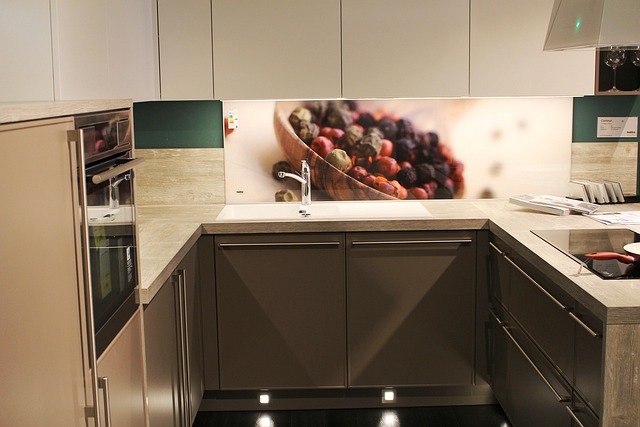Open Concept Kitchens: Efficient Space, Airy Design, Smart Storage

Open concept kitchen layouts are revolutionizing modern home design by eliminating walls to create a…….
Open-Concept Kitchen Layouts: A Modern Nexus of Design, Functionality, and Social Interaction
Introduction
In the realm of residential design, open-concept kitchen layouts have become a cornerstone of modern living spaces. These layouts blend the kitchen with adjacent areas such as living rooms and dining areas, fostering an environment where cooking becomes a shared experience rather than a secluded activity. This comprehensive article will delve into the intricacies of open-concept kitchen layouts, their global impact, economic considerations, technological advancements, policy landscape, challenges, case studies, future prospects, and answer frequently asked questions. Readers will gain a nuanced understanding of this design phenomenon and its significance in contemporary homes.
Understanding Open-Concept Kitchen Layouts
Open-concept kitchen layouts are characterized by their seamless integration with other living spaces within a home. The core components include an open floor plan, often featuring minimal barriers like partial walls or columns that allow visual and physical flow between the kitchen, dining, and family areas. This design approach originated in the mid-20th century as a response to changing lifestyles and a desire for more communal living spaces.
The significance of open-concept kitchen layouts lies in their ability to promote social interaction, enhance natural light distribution, and offer a flexible space that can be adapted for various uses. They are a testament to the evolution of family dynamics and have become synonymous with modernity and contemporary aesthetics in home design.
Global Impact and Trends
The influence of open-concept kitchen layouts is evident across the globe, with regional variations reflecting cultural preferences and architectural norms. In North America and parts of Europe, these layouts are prevalent due to their alignment with values such as openness, efficiency, and communal living. In contrast, Asian countries like Japan and Singapore have embraced this concept in response to limited space requirements, often incorporating innovative space-saving solutions.
Key trends shaping the trajectory of open-concept kitchen layouts include a focus on sustainability, smart home technology integration, and customizable modular units that can adapt to changing needs. The trend towards minimalism has also influenced design choices, with clean lines and multifunctional spaces becoming more popular.
Economic Considerations
The economic aspects of open-concept kitchen layouts are multifaceted. From a market dynamics perspective, there is a growing demand for homes featuring these layouts, which can influence property values and real estate trends. Investment patterns indicate a preference for properties that offer modern, versatile spaces, which open-concept designs provide.
Economically, open-concept kitchen layouts are a driver of growth in industries such as home construction, interior design, and furniture manufacturing. They also play a role in economic systems by promoting social cohesion and potentially reducing the need for separate dining and entertainment spaces.
Technological Advancements
Technology has significantly impacted open-concept kitchen layouts, with advancements ranging from smart appliances to lighting solutions that enhance both functionality and ambiance. The integration of home automation systems allows for temperature control, energy management, and even voice-activated controls that can be accessed throughout the open space.
Future potential includes the advent of more personalized smart kitchens, with technology that anticipates the user’s needs, offers health and nutritional monitoring, and streamlines meal preparation through connected devices. The convergence of design and technology is set to redefine the open-concept kitchen landscape further.
Policy and Regulation
Policies and regulations governing open-concept kitchen layouts vary by jurisdiction but generally focus on safety, building codes, and zoning laws. In many regions, there are specific guidelines regarding the installation of kitchen appliances, ventilation systems, and the handling of waste and utilities. These frameworks ensure that open-concept designs meet health, safety, and environmental standards.
Legislative changes, such as those promoting energy efficiency or accessibility, can also influence the design and functionality of open-concept kitchen layouts. Compliance with these policies is crucial for the continued development and adoption of this design concept.
Challenges and Criticisms
One of the main challenges faced by open-concept kitchen layouts is the potential for overcrowding in small spaces, which can make the area less functional rather than more so. Additionally, without proper planning and design, noise and privacy issues can arise, detracting from the intended social experience.
To address these challenges, designers and architects must focus on creating balanced, well-thought-out spaces that incorporate acoustic considerations, zoning for activity zones, and thoughtful lighting to enhance both form and function. Strategies such as incorporating room dividers or partial walls can offer flexibility while maintaining the open feel.
Case Studies
Several case studies exemplify successful applications of open-concept kitchen layouts. A notable example is the ‘Loft in Prenzlauer Berg,’ Berlin, which seamlessly integrates the kitchen with the living space, creating a bright and airy ambiance. Another is the ‘House for Contemporary Living’ in New York City, designed by architects Morrison & Walsh, which showcases an open-concept layout that prioritizes community interaction and sustainability.
These case studies provide valuable insights into how design choices can address specific needs and preferences while also offering inspiration for future projects.
Future Prospects
The future of open-concept kitchen layouts is poised to evolve with advancements in technology, a continued emphasis on sustainable living, and an ever-shifting landscape of social dynamics. Design trends will likely move towards even more personalized spaces that cater to individual lifestyles, preferences, and the integration of smart home technologies.
As populations grow and urban spaces become denser, open-concept kitchen layouts will continue to be a solution for maximizing space and promoting communal living. The future holds promise for designs that are as functional as they are aesthetically pleasing, leveraging technology to enhance the cooking and dining experience.
Frequently Asked Questions
What are the benefits of an open-concept kitchen layout?
Open-concept kitchen layouts offer a variety of benefits including improved social interaction, enhanced natural light, increased versatility in space usage, and easier oversight of children or guests.
How can noise be managed in an open-concept kitchen?
Strategies to manage noise include using sound-absorbing materials, designing with acoustics in mind, and incorporating barriers or partitions where necessary.
Can open-concept kitchens work in small spaces?
Yes, open-concept designs can be tailored for small spaces by strategically planning the layout to maximize functionality while minimizing visual clutter.
What are some smart kitchen technologies to consider?
Smart technologies include smart appliances that can be controlled remotely, voice-activated assistants like Amazon Alexa or Google Home, and energy management systems that optimize kitchen lighting and temperature.
Are open-concept kitchens suitable for families with young children?
Open-concept kitchen layouts can be very family-friendly, offering a sense of togetherness and allowing for easy supervision. However, safety considerations such as stove and countertop hazards should be addressed with proper design solutions.
In conclusion, open-concept kitchen layouts represent a significant trend in modern home design, influenced by economic factors, cultural shifts, and technological advancements. As we look to the future, these designs will continue to evolve, offering innovative solutions to meet the changing needs of families worldwide.

Open concept kitchen layouts are revolutionizing modern home design by eliminating walls to create a…….

Open-plan kitchen ideas revolutionize modern homes with seamless space integration, prioritizing fun…….

Open kitchen-living spaces combine cooking and entertainment areas for modern, social living. Key de…….

Minimalist kitchen layouts are trending due to their focus on simplicity, functionality, and unclutt…….

Open-concept living, characterized by merged kitchen and living spaces, is reshaping modern homes, p…….

Minimalist kitchen layouts have gained popularity for their ability to create open, spacious environ…….

Minimalist kitchen layouts are gaining popularity for their focus on simplicity, functionality, and…….

Open kitchen-living spaces are a modern trend that integrates cooking and social areas seamlessly, f…….

Open kitchens featuring bar seating are a modern design trend that blends cooking, dining, and socia…….

Open concept kitchen layouts, popular for their merging of cooking and living spaces, require though…….